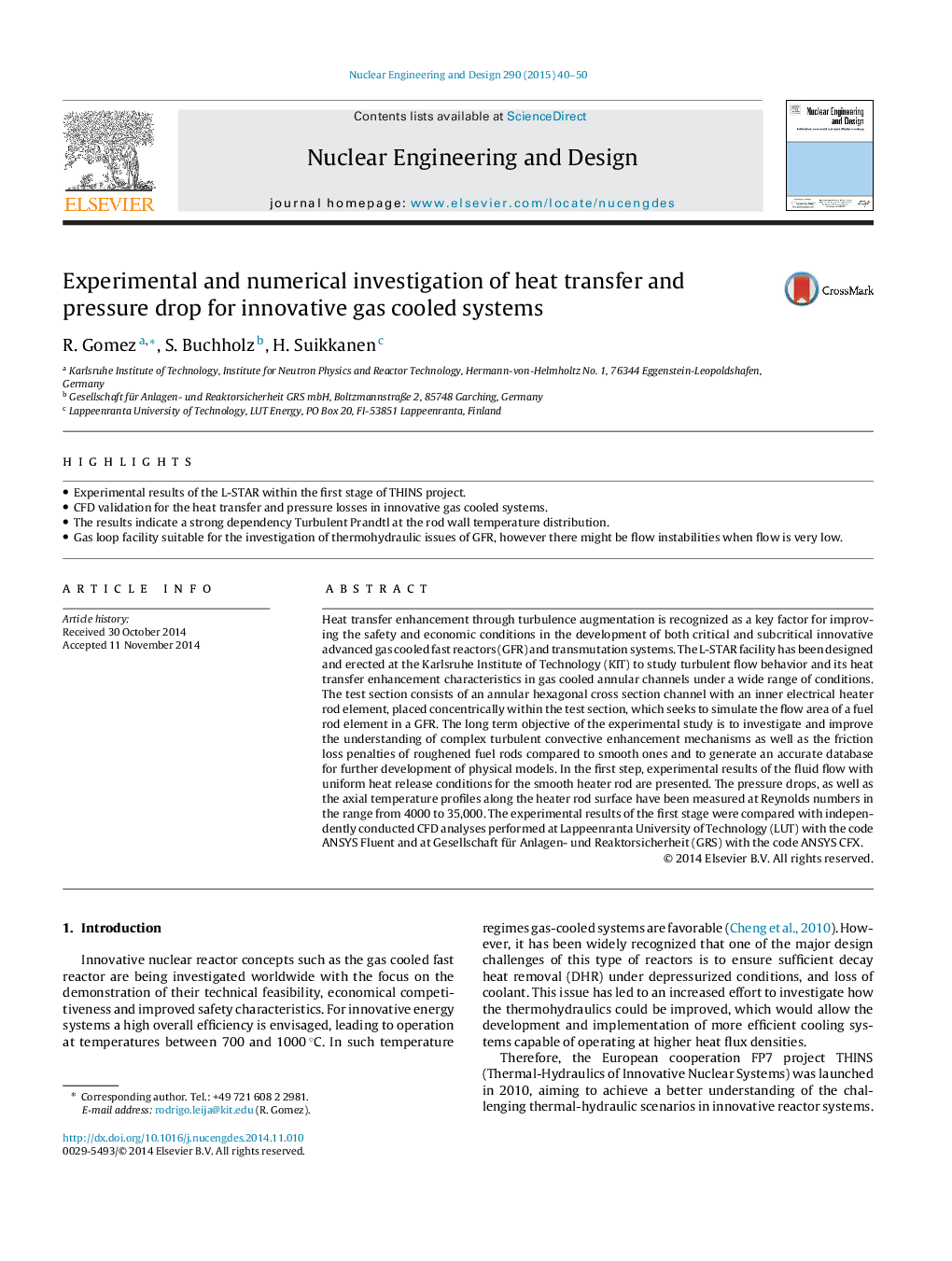| کد مقاله | کد نشریه | سال انتشار | مقاله انگلیسی | نسخه تمام متن |
|---|---|---|---|---|
| 296120 | 511709 | 2015 | 11 صفحه PDF | دانلود رایگان |
• Experimental results of the L-STAR within the first stage of THINS project.
• CFD validation for the heat transfer and pressure losses in innovative gas cooled systems.
• The results indicate a strong dependency Turbulent Prandtl at the rod wall temperature distribution.
• Gas loop facility suitable for the investigation of thermohydraulic issues of GFR, however there might be flow instabilities when flow is very low.
Heat transfer enhancement through turbulence augmentation is recognized as a key factor for improving the safety and economic conditions in the development of both critical and subcritical innovative advanced gas cooled fast reactors (GFR) and transmutation systems. The L-STAR facility has been designed and erected at the Karlsruhe Institute of Technology (KIT) to study turbulent flow behavior and its heat transfer enhancement characteristics in gas cooled annular channels under a wide range of conditions. The test section consists of an annular hexagonal cross section channel with an inner electrical heater rod element, placed concentrically within the test section, which seeks to simulate the flow area of a fuel rod element in a GFR. The long term objective of the experimental study is to investigate and improve the understanding of complex turbulent convective enhancement mechanisms as well as the friction loss penalties of roughened fuel rods compared to smooth ones and to generate an accurate database for further development of physical models. In the first step, experimental results of the fluid flow with uniform heat release conditions for the smooth heater rod are presented. The pressure drops, as well as the axial temperature profiles along the heater rod surface have been measured at Reynolds numbers in the range from 4000 to 35,000. The experimental results of the first stage were compared with independently conducted CFD analyses performed at Lappeenranta University of Technology (LUT) with the code ANSYS Fluent and at Gesellschaft für Anlagen- und Reaktorsicherheit (GRS) with the code ANSYS CFX.
Journal: Nuclear Engineering and Design - Volume 290, 15 August 2015, Pages 40–50
